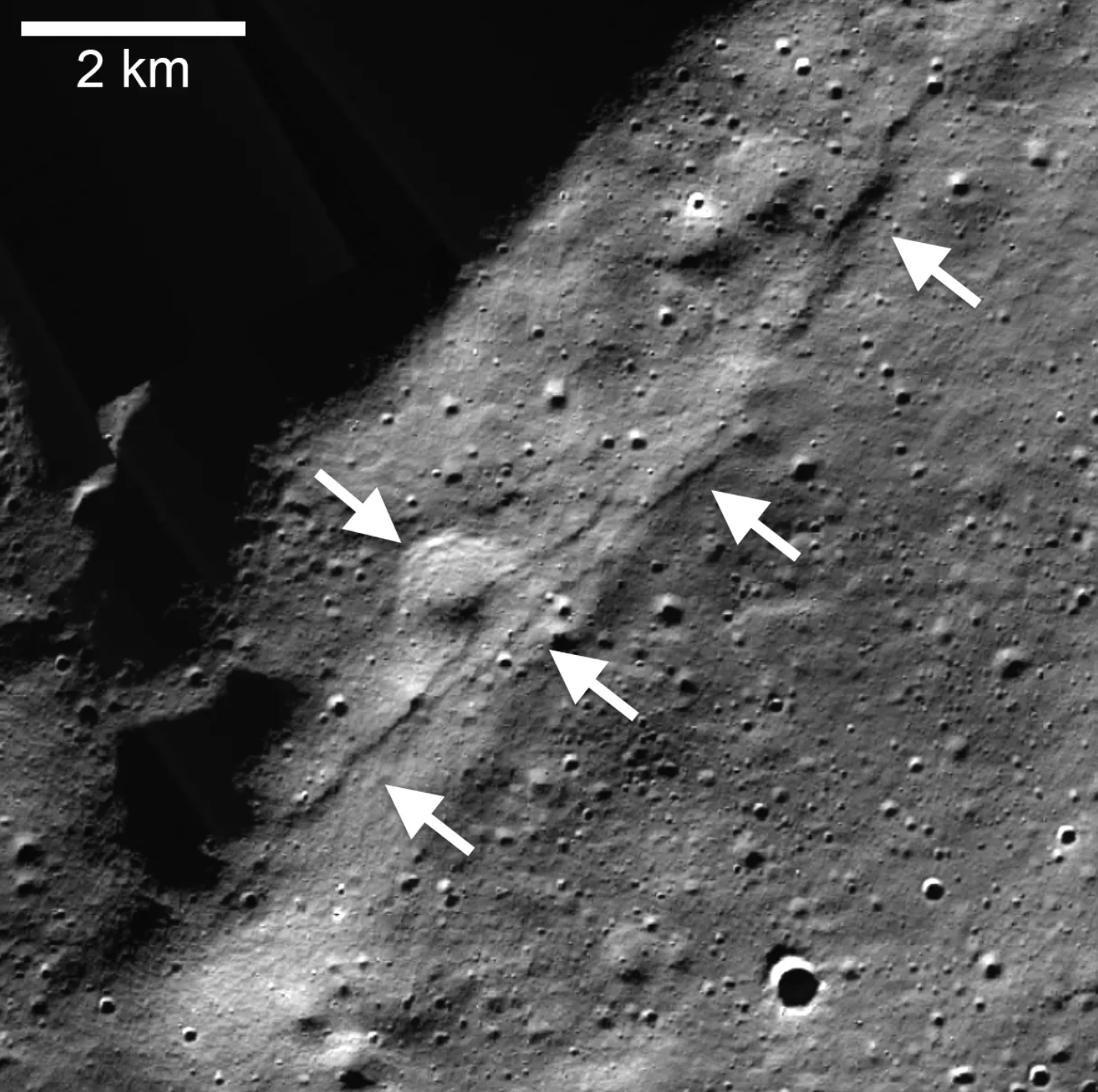
Seismic events throughout its history have sculpted the Moon’s crust with the cracks and cliffs we observe today. These features formed as the Moon shrank and sections of crust were pushed on top of one another.
Now, a new study of surface warping in the Moon’s south polar region has found evidence that some areas proposed for future landings are near or within fault zones and vulnerable to moonquakes. The paper was published in The Planetary Science Journal on Jan. 25, 2024.
A shaky and shrinking Moon
The Moon has shrunk over time as its core slowly cooled. A previous analysis of NASA’s Lunar Reconnaissance Orbiter (LRO) images found that the Moon’s shrinkage is comparable to that of a grape, which shrivels up as it turns into a raisin. That same analysis found that the Moon is still shrinking today, which creates moonquakes along the faults that have developed.
The new study found that a group of cracks in the Moon’s south polar region are linked to a mighty moonquake captured in the 1970s by Apollo seismometers. The team used computer models to determine the surface stability in that area were, finding that some slopes are susceptible to landslides caused by moonquakes.
“Our modeling suggests that shallow moonquakes capable of producing strong ground shaking in the south polar region are possible from slip events on existing faults or the formation of new thrust faults,” said Thomas R. Watters, the study’s lead author and a planetary tectonics expert at National Air and Space Museum’s Center for Earth and Planetary Studies, in a press release. “The global distribution of young thrust faults, their potential to be active, and the potential to form new thrust faults from ongoing global contraction should be considered when planning the location and stability of permanent outposts on the Moon.”
Artemis III
Seismic activity could threaten planned human exploration efforts for the first Artemis crewed landing, Artemis III. Shallow moonquakes, which occur at depths of about 100 miles (161 kilometers), can last hours. The large moonquake the Apollo Passive Seismic Network picked up was a magnitude 5 quake and lasted an entire afternoon.
NASA is interested in exploring the lunar south pole because it has permanently shadowed regions where ice may linger. Artemis III is currently planned for 2026. When astronauts land, they will explore the darkened regions with navigation systems and headlamps.
Before this and other missions commence, the research team is hoping to find more areas that may be too risky to explore so they can be avoided.
“As we get closer to the crewed Artemis mission’s launch date, it’s important to keep our astronauts, our equipment, and infrastructure as safe as possible,” said Nicholas Schmerr, study co-author and geologist at the University of Maryland. “This work is helping us prepare for what awaits us on the Moon — whether that’s engineering structures that can better withstand lunar seismic activity or protecting people from really dangerous zones.”









